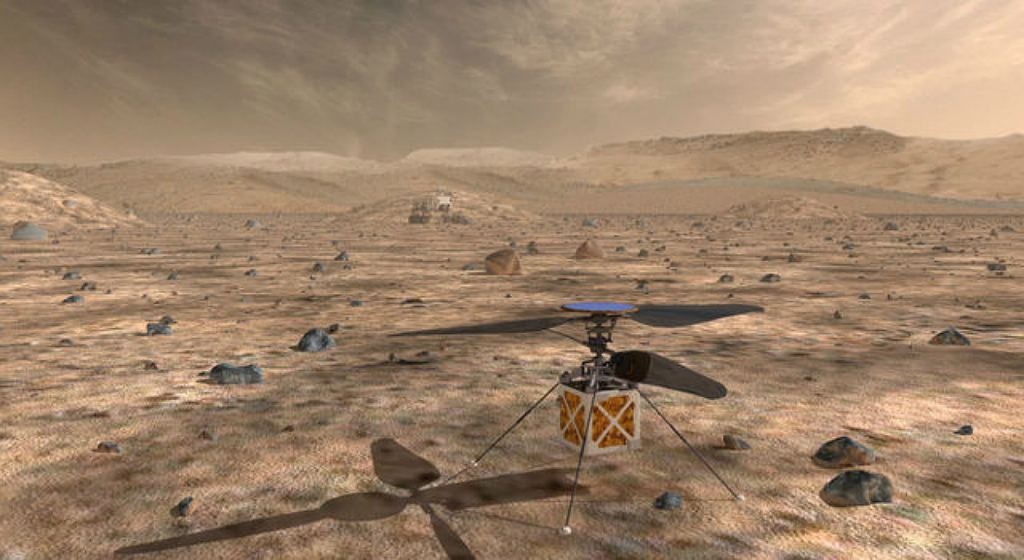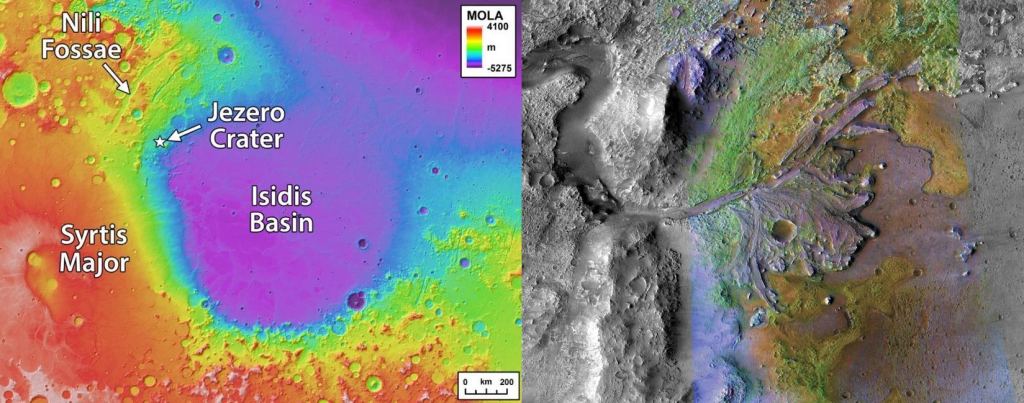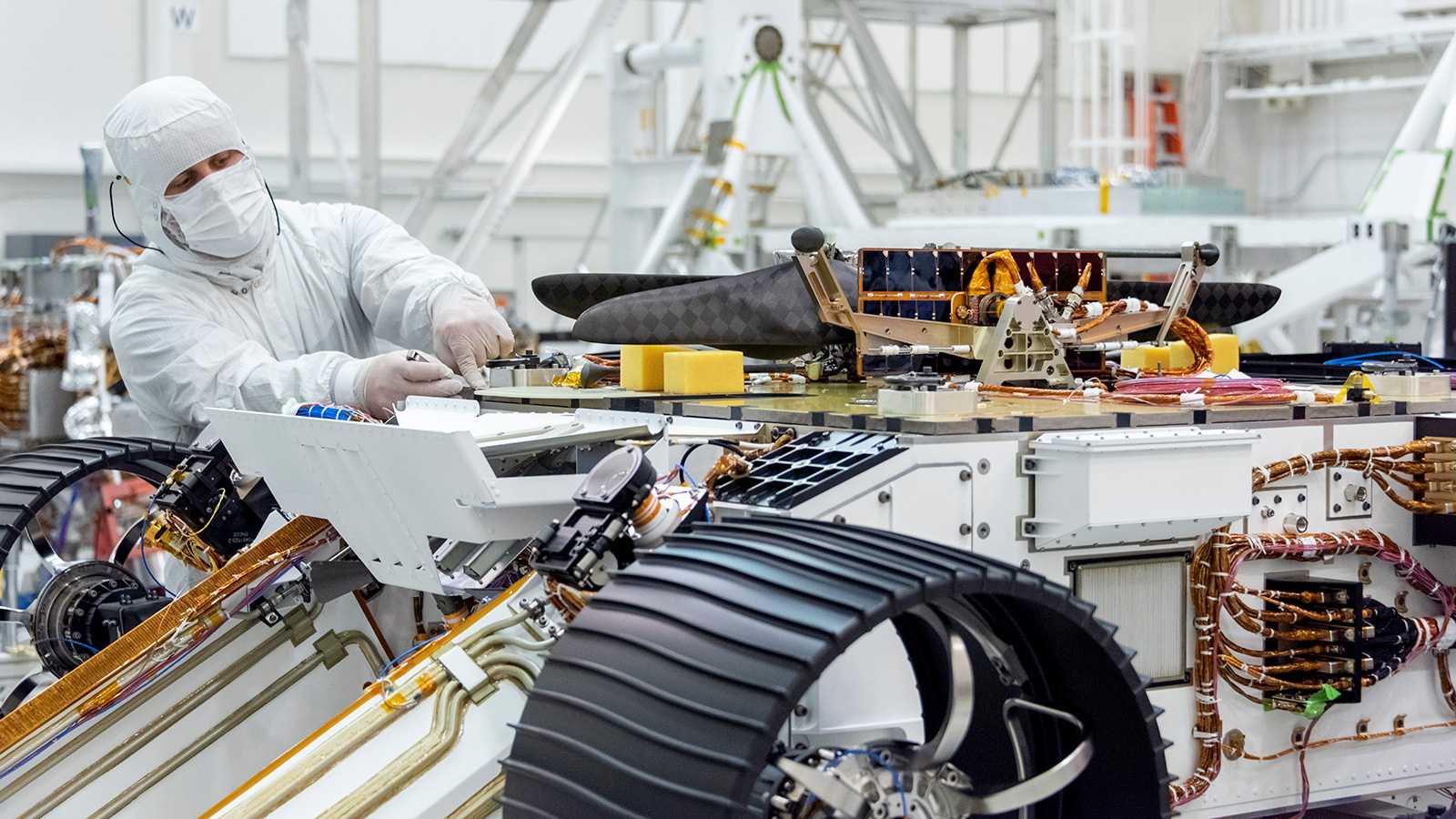Work on the Mars 2020 Rover is heating up as the July/August 2020 launch date approaches. Mission engineers just attached the Mars Helicopter to the belly of the rover, where it will make the journey to Mars. Both the solar-powered helicopter and the Mars Helicopter Delivery System are now attached to the rover.
NASA’s Mars Helicopter will be the first aircraft to fly on another planet. The small rotor-craft only weighs 1.8 kg (4 lbs.) and is made of lightweight materials like carbon fiber and aluminum. It’s largely a technology demonstration mission, and is important to NASA. The overall mission for the Mars 2020 rover won’t depend on the helicopter, but NASA hopes to learn a lot about how to proceed with aircraft on future missions by putting the Mars helicopter through its paces on Mars.
NASA is no hurry to deploy the helicopter once the rover lands on Mars in February 2021. The helicopter and the delivery system will ride with the rover after it lands at Jezero Crater. Once they find a suitable place for test flights, the helicopter will be deployed.
“…we look forward to the day when Mars helicopters can play an important role in future explorations of the Red Planet.”
MiMi Aung, Mars Helicopter Project Manager, JPL.
NASA says that the Mars Helicopter is a high risk technology mission. If it works, and is able to fly as planned, then it will also be a high reward mission. The results will tell NASA a lot about using helicopters, and the generation of helicopters after this one will hopefully add an aerial component to future rover missions. This would open up a lot of scientific and exploration options in the future.

MiMi Aung is the Mars Helicopter Project Manager at JPL. In a press release, Aung said, “Our job is to prove that autonomous, controlled flight can be executed in the extremely thin Martian atmosphere. Since our helicopter is designed as a flight test of experimental technology, it carries no science instruments. But if we prove powered flight on Mars can work, we look forward to the day when Mars helicopters can play an important role in future explorations of the Red Planet.”
Flying in the thin Martian atmosphere will be challenging. Aircraft have to be super light, which the Martian Helicopter is. They’ll also have to be autonomous, since there’s no way to control one directly from such a great distance. But with advances in AI, that obstacle is shrinking.
“Together, Mars 2020 and the Mars Helicopter will help define the future of science and exploration of the Red Planet for decades to come.”
Thomas Zurbuchen, associate administrator of the Science Mission Directorate at NASA
Small autonomous aircraft could add a lot to a Mars rover mission. They could investigate areas that are out of reach for wheeled vehicles, like caves, cliffs, and deep craters. They could capture detailed images of potential landing sites from their aerial viewpoint. They could act as scouts for the rover they travel with, potentially saving time and energy for the rover. They could also carry small scientific instruments.
And they’ll probably have uses that nobody’s thought of yet, and that technology doesn’t allow yet.
Thomas Zurbuchen, associate administrator of the Science Mission Directorate at NASA, wasn’t wrong when he said, “Together, Mars 2020 and the Mars Helicopter will help define the future of science and exploration of the Red Planet for decades to come.”
“The Wright Brothers flew the first airplane at Kitty Hawk, North Carolina, but they built it in Dayton,” said NASA Administrator Jim Bridenstine. “The Mars Helicopter, destined to be the first aircraft to fly on another world, was built in Pasadena, California. Joined now to the 2020 rover, it is yet another example of how NASA’s Artemis generation is expanding humanity’s reach in our solar system.”

The Mars 2020 Rover is scheduled to be launched on an Atlas V 541 rocket from Cape Canaveral. Its overall mission is to search for evidence of habitability in Mars’ ancient past. It’ll also look for evidence of past microbial life. The planned mission duration is one Martian year, or 668 sols.
More:
- NASA Press Release: NASA’s Mars Helicopter Attached to Mars 2020 Rover
- Wikipedia: Jezero Crater
- Universe Today: Mars Helicopter Completes More Test Flights. It’s Almost Ready to go to Mars
- Universe Today: It’s Decided, the Mars 2020 Rover Will Land in Jezero Crater

